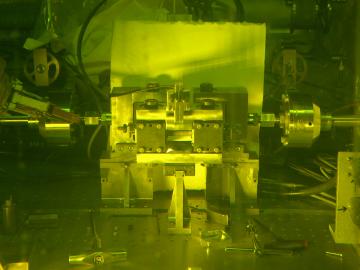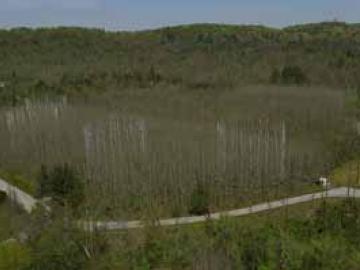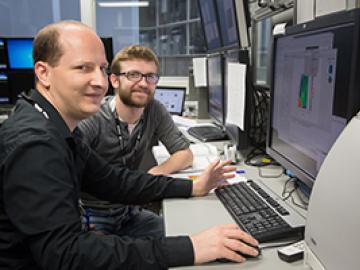Filter News
Area of Research
- Biology and Soft Matter (1)
- Chemical and Engineering Materials (1)
- Chemistry and Physics at Interfaces (3)
- Clean Energy (4)
- Computational Chemistry (1)
- Energy Frontier Research Centers (3)
- Functional Materials for Energy (3)
- Fusion Energy (1)
- Geographic Information Science and Technology (1)
- Materials (9)
- Materials Synthesis from Atoms to Systems (3)
- Materials Under Extremes (3)
- Neutron Science (5)
- Nuclear Science and Technology (1)
- Quantum Condensed Matter (1)
- Supercomputing (5)
News Type
Media Contacts


Drafty buildings are a thermostat’s worst enemy. Leaks around windows and a multitude of other breaches in the building envelope can cause heat and air-conditioning systems to run excessively, hogging energy as it continually warms — or cools and dehumidifies — the invading outside air.



Run-2 for the Large Hadron Collider (LHC)—the world’s largest and most powerful particle collider—began April 5 at CERN, the European Laboratory for Nuclear Research. In preparation, Thomas M. Cormier, who leads the LHC Heavy Ion group at Oak Ridge National Laboratory, led an upgrade of the electromagnetic calorimeter used for LHC’s experiment called ALICE (for A Large Ion Collider Experiment).


From the bluebird painting propped against her office wall and the deer she mentions seeing outside her office window, Linda Lewis might be mistaken for a wildlife biologist at first glance. But rather than trailing animal tracks, Lewis, a researcher at the Department of Energy’s Oak Ridge National Laboratory, is more interested in marks left behind by humans.

With more than 30 patents, James Klett is no stranger to success, but perhaps the Oak Ridge National Laboratory researcher’s most noteworthy achievement didn’t start out so hot – or so it seemed at the time.


Drivers trying to get to work or home in a hurry know traffic congestion wastes a lot of time, but it also wastes a lot of fuel. In 2011, congestion caused people in US urban areas to travel an extra 5.5 billion hours and purchase an extra 2.9 billion gallons of fuel costing $121 billion. But despite the tangle of vehicles at busy intersections and interstate ramps, most of the country’s highways are open road with vehicles occupying only about 5 percent of road surface.




